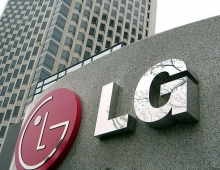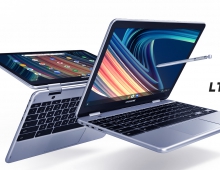
4G Transition and Tablet Devices Spur Growth of Mobile Communications
While many technology markets are decelerating following the boom
year of 2010, growth in the wireless communications equipment
business is actually accelerating in 2011, driven by the transition
to 4G wireless standards and the emergence of media tablets,
according to IHS iSuppli research.
Factory revenue for wireless communications gear in 2011 is projected
to reach $302.7 billion, up a solid 20.6 percent from $251.1 billion
last year. Growth this year will exceed last year's climb of 15.1
percent, with no signs of a decline in the years ahead, iSuppli said.
By 2014, the industry will have added another $100 billion dollars to its coffers, accumulating $413.3 billion worldwide in equipment revenue, the research firm estimates. Encompassing a broad array of devices, the wireless communications equipment market includes mobile handsets, mobile infrastructure, mobile and fixed wireless broadband access devices, wireless LAN equipment such as routers, cordless phones and handset battery chargers.
In the developed world, wireless deployments by carriers currently revolve around 3.5G standards such as evolved high speed packet access (HSPA+). The migration to 4G is already starting, however, and the largest portion of infrastructure capital spending by 2012 will be on the 4G wireless standard known as long term evolution (LTE).
In particular, the LTE transition is being used by various nodes of the supply chain to effect changes in company positioning, business relationships or both. For example, companies that had not been able to create a significant position in 3G - due to market tardiness or a focus on other technologies - now are utilizing the transition to modify the status quo, offering LTE chipsets through organic development or outright acquisition.
The purchase by Broadcom Corp. of Beecem Communications is one example of a company attempting to alter its current market position during this transition; Beecem is a supplier of chips using a smaller but similar 4G standard known as WiMAX, based on orthogonal frequency division multiple access (OFDMA). Samsung Electronics and LG Electronics also are investing heavily on creating their own LTE chip after being unsuccessful in earlier efforts to make 3G chipsets.
For these and other semiconductor suppliers as well as infrastructure and device vendors, HSPA+ and LTE represent revenue growth potential, as well as a chance to develop long-term relationships across the ecosystem. The vendors that will win in the transition to 4G will be those that can best realign their core competencies to the new paradigms, forge these relationships, and leverage them, IHS iSuppli research indicates.
Within the mobile communications market, wireless handsets and mobile communications infrastructure gear together account for more than 70 percent of overall industry revenues. Mobile handset shipments in 2011 are anticipated to reach 1.42 billion units, up approximately 10 percent from 1.29 billion units last year.
Nonetheless, with the handset sector maturing, the industry is looking at mobilizing other types of consumer electronics devices that now have emerged as adjacent markets. These devices include media tablets, netbooks, e-book readers, and portable media players.
Because these devices use virtually the same products and solutions employed in the handset market for communications purposes, the wireless value chain now has an opportunity to expand its total available market, with just relatively minor modifications - if at all - needed to be made to existing products.
In terms of current volume, the new market for mobilized non-handset devices is driven by notebooks, netbooks and e-book readers. However, the re-emergence of tablets, such as the iPad from Apple, has invigorated the overall wireless communications market and heralds the most promising growth.
Shipment of media tablets with embedded wireless wide area networking capability, such as 3G or 4G, are projected to grow to more than 18 million units by 2014, a staggering increase from just 2 million in 2010.
By 2014, the industry will have added another $100 billion dollars to its coffers, accumulating $413.3 billion worldwide in equipment revenue, the research firm estimates. Encompassing a broad array of devices, the wireless communications equipment market includes mobile handsets, mobile infrastructure, mobile and fixed wireless broadband access devices, wireless LAN equipment such as routers, cordless phones and handset battery chargers.
In the developed world, wireless deployments by carriers currently revolve around 3.5G standards such as evolved high speed packet access (HSPA+). The migration to 4G is already starting, however, and the largest portion of infrastructure capital spending by 2012 will be on the 4G wireless standard known as long term evolution (LTE).
In particular, the LTE transition is being used by various nodes of the supply chain to effect changes in company positioning, business relationships or both. For example, companies that had not been able to create a significant position in 3G - due to market tardiness or a focus on other technologies - now are utilizing the transition to modify the status quo, offering LTE chipsets through organic development or outright acquisition.
The purchase by Broadcom Corp. of Beecem Communications is one example of a company attempting to alter its current market position during this transition; Beecem is a supplier of chips using a smaller but similar 4G standard known as WiMAX, based on orthogonal frequency division multiple access (OFDMA). Samsung Electronics and LG Electronics also are investing heavily on creating their own LTE chip after being unsuccessful in earlier efforts to make 3G chipsets.
For these and other semiconductor suppliers as well as infrastructure and device vendors, HSPA+ and LTE represent revenue growth potential, as well as a chance to develop long-term relationships across the ecosystem. The vendors that will win in the transition to 4G will be those that can best realign their core competencies to the new paradigms, forge these relationships, and leverage them, IHS iSuppli research indicates.
Within the mobile communications market, wireless handsets and mobile communications infrastructure gear together account for more than 70 percent of overall industry revenues. Mobile handset shipments in 2011 are anticipated to reach 1.42 billion units, up approximately 10 percent from 1.29 billion units last year.
Nonetheless, with the handset sector maturing, the industry is looking at mobilizing other types of consumer electronics devices that now have emerged as adjacent markets. These devices include media tablets, netbooks, e-book readers, and portable media players.
Because these devices use virtually the same products and solutions employed in the handset market for communications purposes, the wireless value chain now has an opportunity to expand its total available market, with just relatively minor modifications - if at all - needed to be made to existing products.
In terms of current volume, the new market for mobilized non-handset devices is driven by notebooks, netbooks and e-book readers. However, the re-emergence of tablets, such as the iPad from Apple, has invigorated the overall wireless communications market and heralds the most promising growth.
Shipment of media tablets with embedded wireless wide area networking capability, such as 3G or 4G, are projected to grow to more than 18 million units by 2014, a staggering increase from just 2 million in 2010.





















